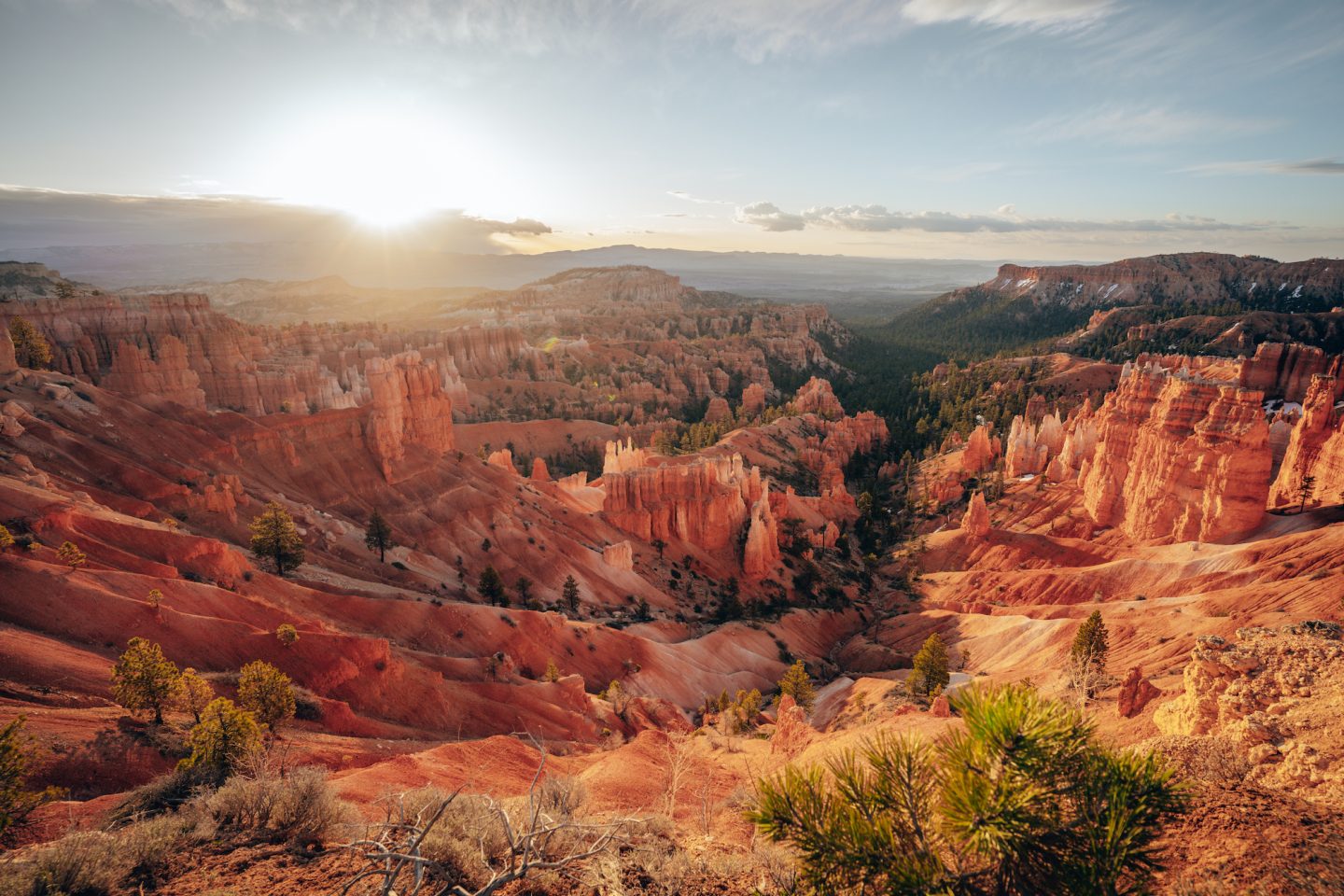
Welcome to the captivating world of Bryce Canyon National Park in Utah. An extraordinary natural wonder nestled in the heart of southern Utah. With its awe-inspiring vistas, intricate rock formations, and a kaleidoscope of colors that change with the shifting sunlight, Bryce Canyon is a true gem of the American Southwest. This geological masterpiece, characterized by its iconic hoodoos, draws visitors from all corners of the globe, eager to witness its breathtaking beauty firsthand. From stunning sunrise hikes to stargazing under a blanket of twinkling stars, this enchanting park offers an immersive experience like no other. Join us as we embark on a virtual journey through the mesmerizing landscapes and intriguing history of Bryce Canyon National Park, where nature’s artistry takes center stage.
ABOUT BRYCE CANYON NATIONAL PARK
Established as a national park in 1928, Bryce Canyon National Park holds a rich and captivating history that spans far beyond its formal recognition. The area has been inhabited for thousands of years by Native American tribes, including the Paiute people, who considered the region sacred and relied on its resources for sustenance.
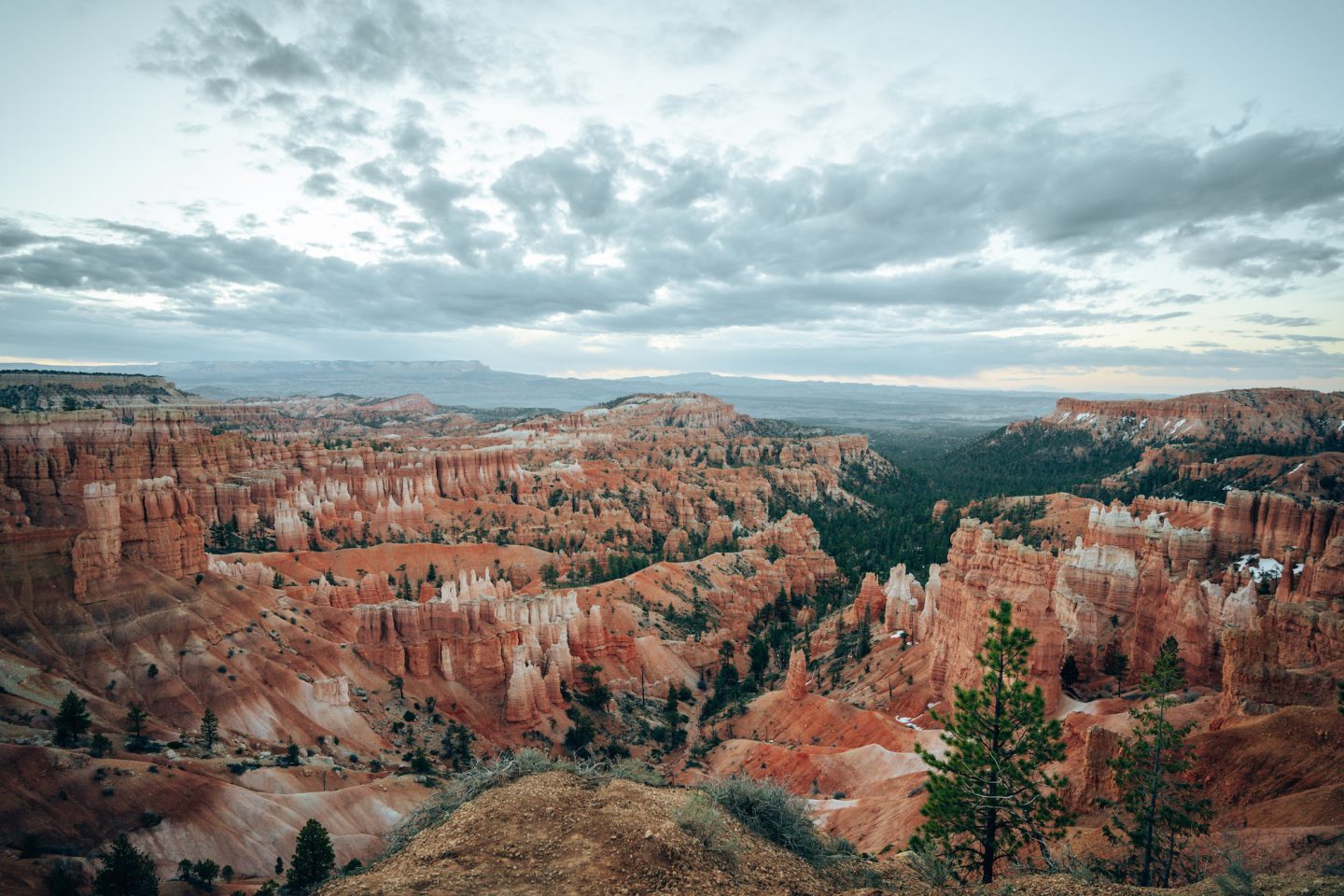
European-American exploration and settlement began in the mid-19th century when Mormon pioneers ventured into the area, eventually establishing communities in the surrounding region. Despite its name, Bryce Canyon is not actually a canyon but a collection of natural amphitheaters eroded into the Pink Cliffs of the Paunsaugunt Plateau. It owes its name to early settler Ebenezer Bryce, who homesteaded in the area in the late 1800s.
The unique rock formations, known as hoodoos, intrigued and inspired visitors, leading to the area’s preservation as a national monument in 1923 and later as a national park. Today, the park stands as a testament to the remarkable geological processes that shaped its landscape and continues to captivate visitors with its unparalleled beauty.
INTERESTING FACTS ABOUT BRYCE CANYON
HOW DID BRYCE CANYON NATIONAL PARK FORM?
Bryce Canyon National Park owes its extraordinary geological formations to a combination of unique factors and millions of years of natural processes. The formation of the park’s famous hoodoos began around 65 million years ago. The region was once covered by an ancient lake, Lake Claron, which deposited layers of sediment, including sand, silt, and limestone.
Over time, the movement of tectonic plates uplifted the region, causing the lake to drain and exposing the sedimentary layers to the forces of erosion. The primary agents of erosion in Bryce Canyon are frost wedging and chemical weathering. The freezing and thawing of water in cracks and crevices gradually break down the rocks, while rainwater, which is slightly acidic, dissolves the calcium carbonate in the limestone, further sculpting the formations.
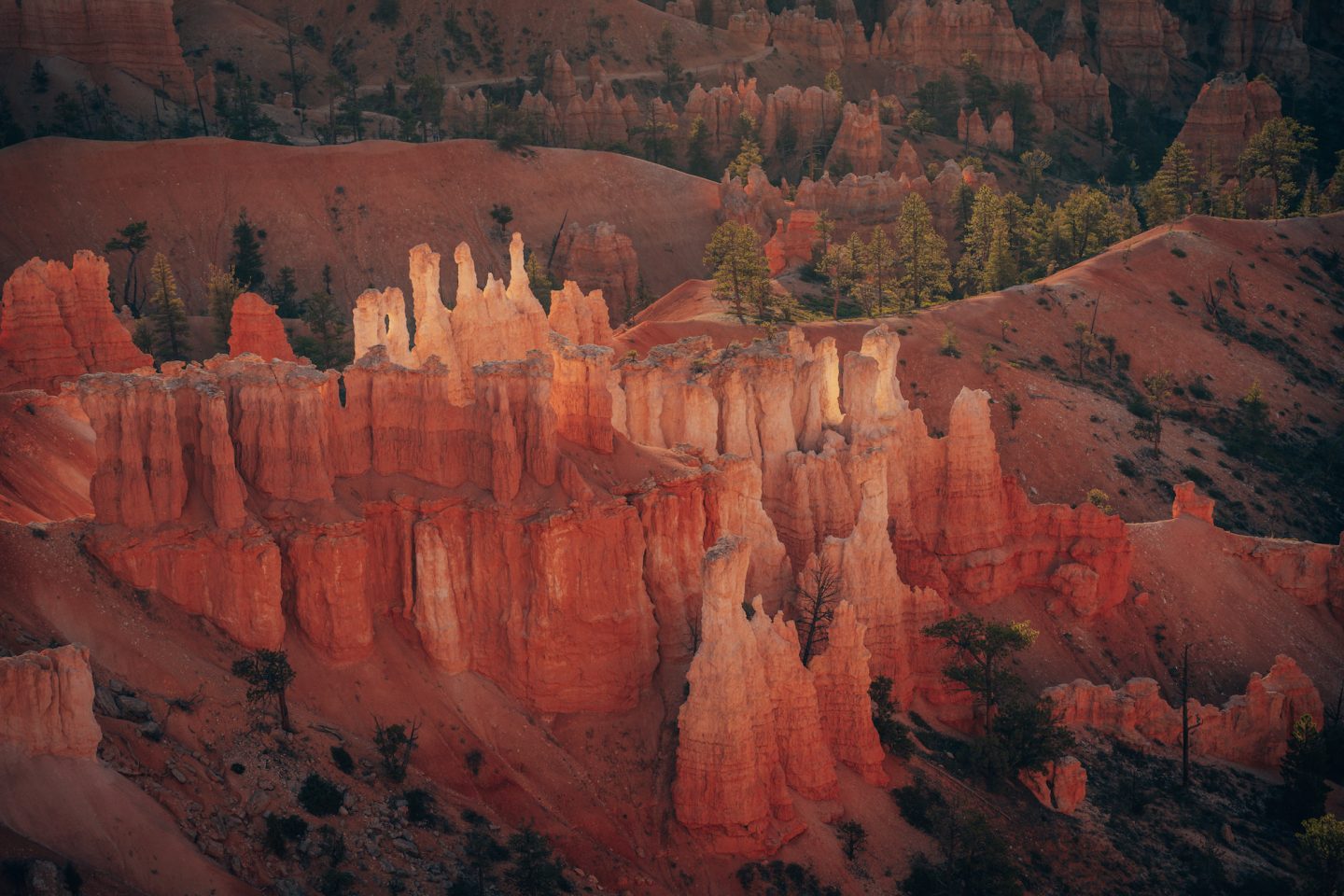
As the erosion process continued, the unique geological features known as hoodoos began to take shape. Hoodoos are formed when the resistant caprock protects the softer rock beneath it from erosion. Over time, the softer rock erodes away, leaving behind the towering spires, fins, and pinnacles that define the landscape of Bryce Canyon.
The specific shapes and sizes of the hoodoos are a result of the different rates of erosion across the park. The varying levels of hardness in the rock layers, along with the presence of natural fractures and joints, contribute to the diverse and intricate formations observed throughout the park.
While the park’s iconic hoodoos are the main attraction, other geological features, such as slot canyons, natural arches, and alcoves, can also be found within Bryce Canyon National Park. Together, these geological wonders provide a testament to the incredible power of natural forces and the passage of time.
NATIVE AMERICAN FOLKLORE ABOUT THE HOODOOS
The Native American tribes in the region surrounding Bryce Canyon National Park, particularly the Paiute people, have rich cultural traditions and stories that offer unique perspectives on the hoodoos and the formation of Bryce Canyon. While specific myths may vary among different tribes, here is an example of a Native American myth associated with the hoodoos:
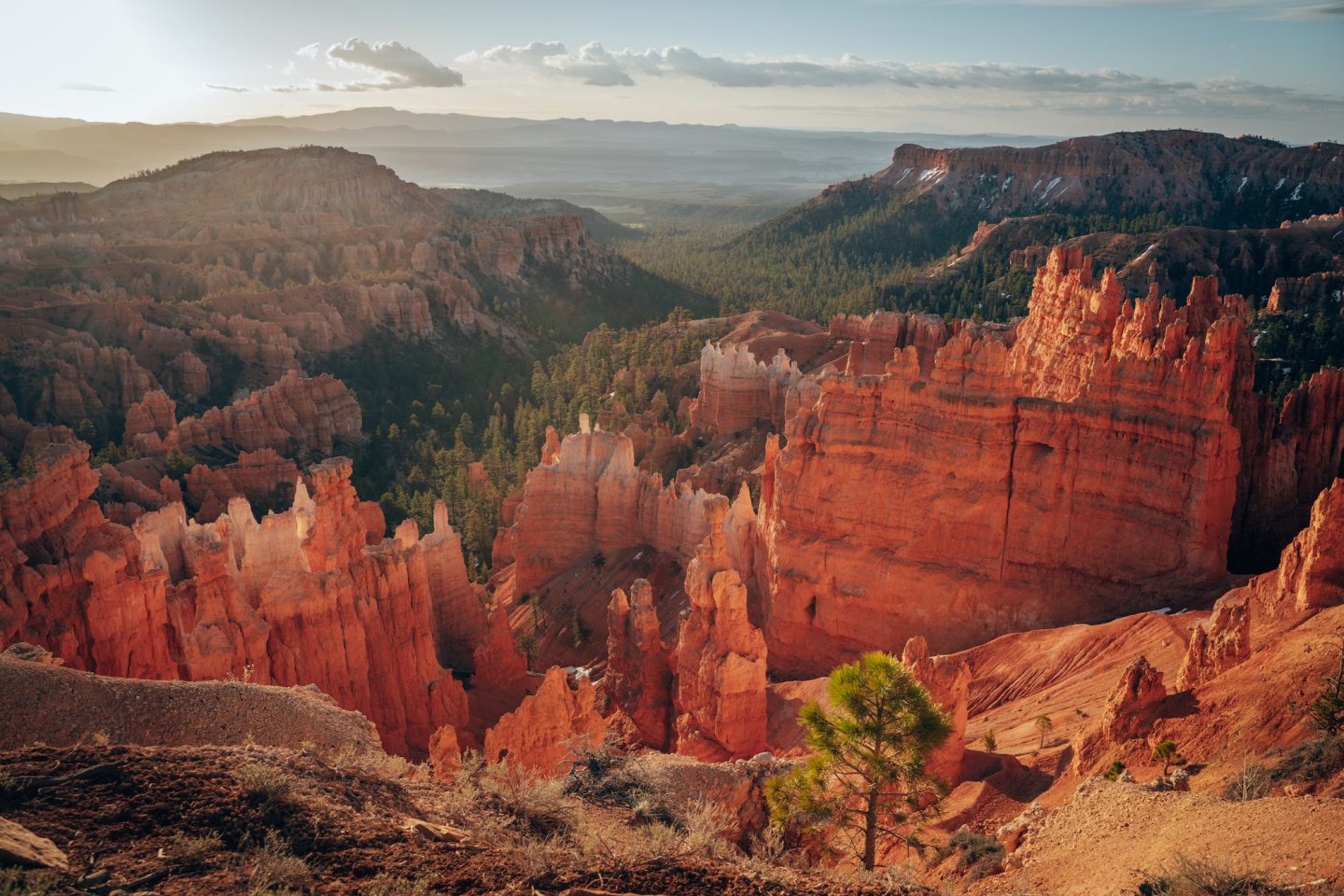
According to Paiute folklore, long ago, there was a time when the land was inhabited by a race of “Legend People” who possessed magical powers. These Legend People were beautiful but mischievous beings who played tricks on the ordinary people. The tribe’s chief, angered by the Legend People’s actions, pleaded with Coyote, a trickster figure and spiritual being, for help. Coyote decided to punish the Legend People by transforming them into stone. As the Legend People ran from Coyote, they became caught in the sunlight, and one by one, they turned into the tall, slender rock formations that we now know as hoodoos.
The Paiute people believe that the hoodoos at Bryce Canyon are the petrified remains of these Legend People, frozen forever in stone as a reminder of their misdeeds. They consider the hoodoos to be powerful and spiritual entities, and some even believe that the hoodoos come to life at night, wandering the canyons and communicating with one another. These Native American myths add a sense of wonder and mystique to the already awe-inspiring landscape of Bryce Canyon National Park. They provide a cultural lens through which to appreciate the formation of the hoodoos, connecting the natural wonders to the deep-rooted spiritual beliefs of the Paiute people.
WHERE IS BRYCE CANYON NATIONAL PARK LOCATED?
Bryce Canyon National Park is situated in the southwestern part of the United States, specifically in the state of Utah. It occupies a unique and captivating region known as the Colorado Plateau. Located in Garfield County, the park covers an area of over 35,000 acres and is nestled within the vast expanse of the Dixie National Forest. The park’s location in the high desert elevations of southern Utah contributes to its striking geological formations, arid climate, and breathtaking vistas. Surrounding the park are other iconic destinations such as Zion National Park to the southwest and Capitol Reef National Park to the east, making it part of a larger network of stunning natural wonders in the region.
DRIVE TIME FROM:
- Salt Lake City – 4 hours
- Las Vegas – 4.5 hours
- Phoenix- 7 hours
- Albuquerque – 8.5 hours
- Los Angeles – 8.5 hours
MAP OF THE BRYCE CANYON NATIONAL PARK
ENTRY TO BRYCE CANYON NATIONAL PARK
ENTRANCE FEES
Good news! No reservations or timed entries required! However, it is one of the most popular National Parks in the United States, so it is common for there to be long lines of vehicles at the entry point. There’s one visitors centers in the park, just beyond the entrance sign.
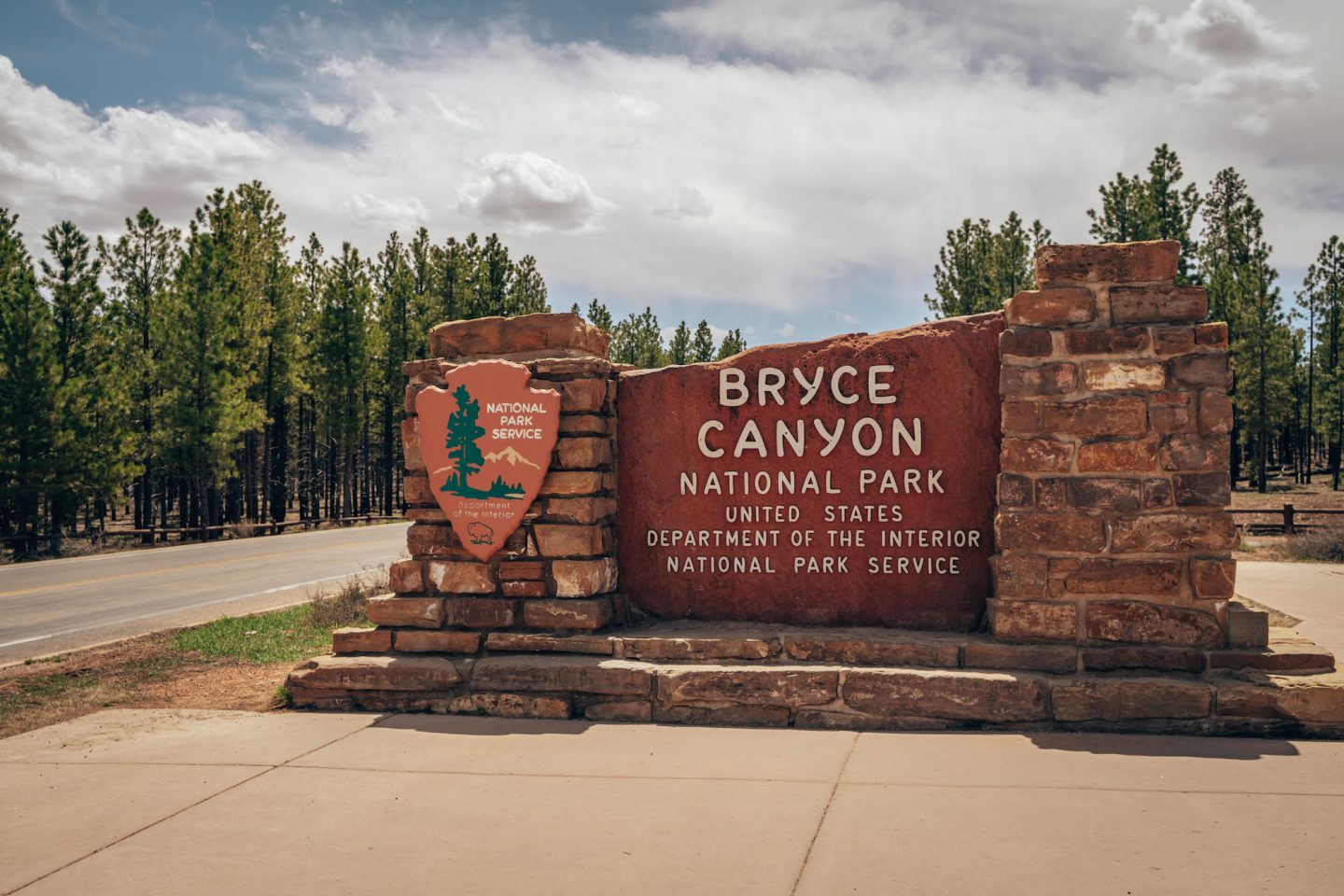
The Bryce Canyon has a standard fee of $35 per vehicle, which is good for 7 days, no matter the time of year you are visiting. If you are someone who lives in Utah or the neighboring areas, and would like to visit Bryce Canyon often, they do have a $70 annual pass that you can get as well. You can view all the entry and pass options HERE. That being said, for an extra $10, you can get the America The Beautiful Annual Pass.
If you are someone like us who is either on a mission to visit every single National Park in the U.S., or plans to visit more than 2 or 3 U.S. national parks per year, then we’d highly recommend getting the America The Beautiful Pass. For $80, this annual pass gives you full access to all 63 National Parks in the U.S., as well as any federal recreational sites that charge a fee for entry. Stay at 3 National Parks and this easily pays for itself.
WHERE TO STAY IN BRYCE CANYON NATIONAL PARK
When it comes to finding the perfect place to stay in or around Bryce Canyon National Park, there are several options that cater to different preferences and budgets. Whether you prefer the convenience of staying within the park or the charm of nearby towns, there’s something for everyone.
WHERE TO STAY INSIDE BRYCE CANYON NATIONAL PARK
If you want to stay within the park itself, consider the historic Bryce Canyon Lodge. This rustic lodge, located near the Bryce Amphitheater, offers comfortable rooms and cabins with stunning views of the hoodoos. The lodge provides easy access to hiking trails and the park’s main attractions, allowing you to immerse yourself in the natural beauty of Bryce Canyon. For those looking to camp, whether it be by tent or RV/camper, there are two campgrounds within the park (North Campground and Sunset Campground), both offering easy access to hiking trails and the parks main areas.
WHERE TO STAY OUTSIDE OF BRYCE CANYON NATIONAL PARK
For those seeking a more secluded experience, the nearby Ruby’s Inn is a popular choice. Located just outside the park’s entrance, Ruby’s Inn offers a variety of accommodations, including hotel rooms, cabins, and RV sites. The property features amenities such as a general store, restaurants, and an indoor pool, making it a convenient base for exploring the park.
If you prefer a wider range of amenities and services, the town of Tropic, Utah, located about 15 miles from Bryce Canyon, is a great option. Tropic offers a selection of cozy bed and breakfasts, inns, and hotels. Staying in Tropic allows you to enjoy a quieter atmosphere while still being within easy reach of the park’s attractions.
Whether you prefer the convenience of staying within the park or the charm of nearby towns, there are plenty of options for accommodations in and around Bryce Canyon National Park. Choose the one that suits your needs, and get ready for an unforgettable adventure amidst the captivating landscapes of this natural wonder.
You can learn more about places to stay in Bryce Canyon National Park HERE.
HARVEST HOSTS
Do you have a RV or a camper? Then Harvest Hosts is easily the best $100 spent. Harvest Host is a network of over 2,500 locations around the U.S., Canada and Mexico that allow you to stay at overnight. The best part? These locations are wineries, breweries, farms, museums and more! Imagine opening the door to your camper or RV to morning views over a vineyard. Or sipping delicious beer at a local brewery. This is the life you could be living. So if you aren’t already a member, trust us, click here and sign up!
BLM AND FREE CAMPING SPOTS
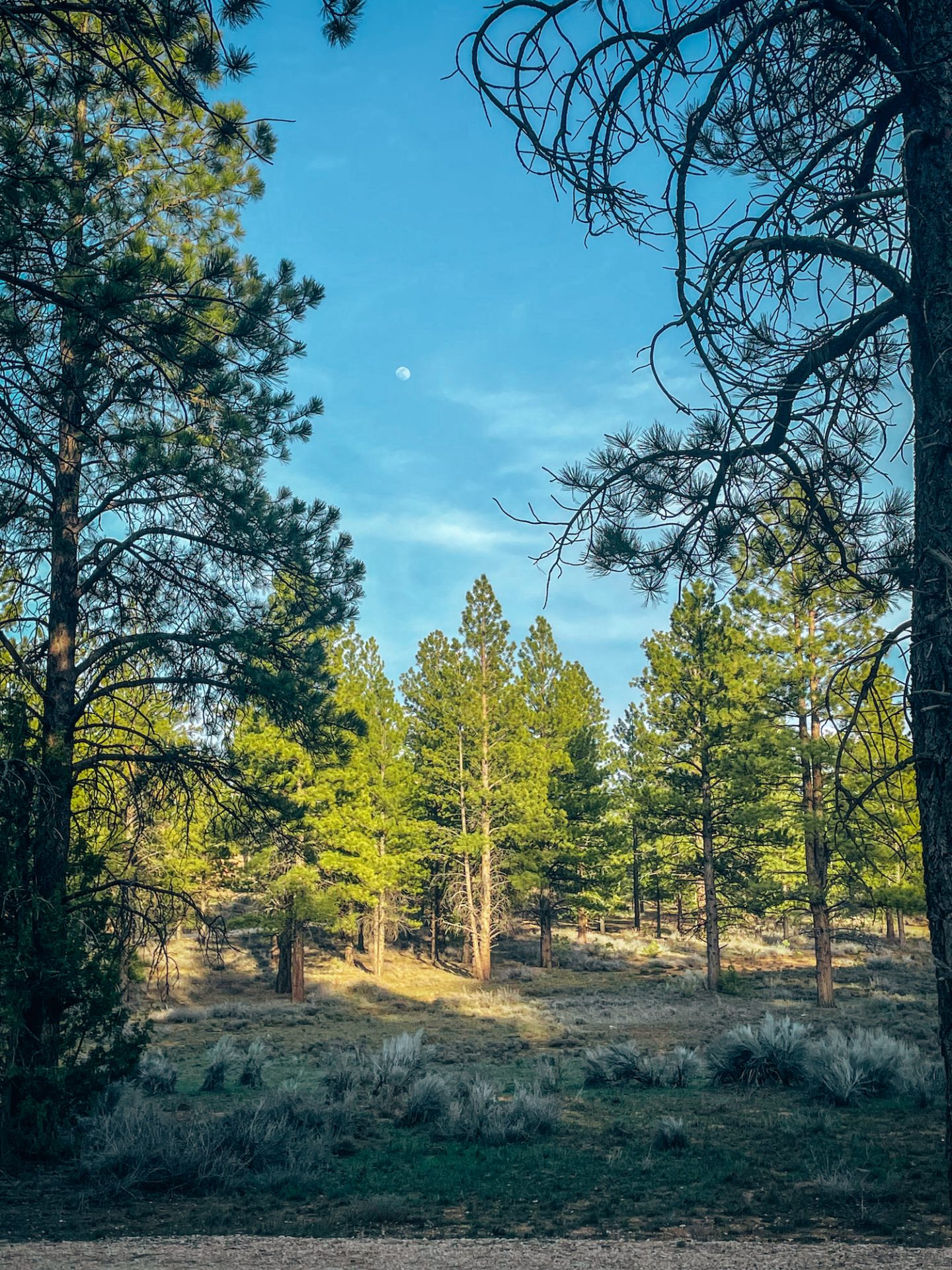
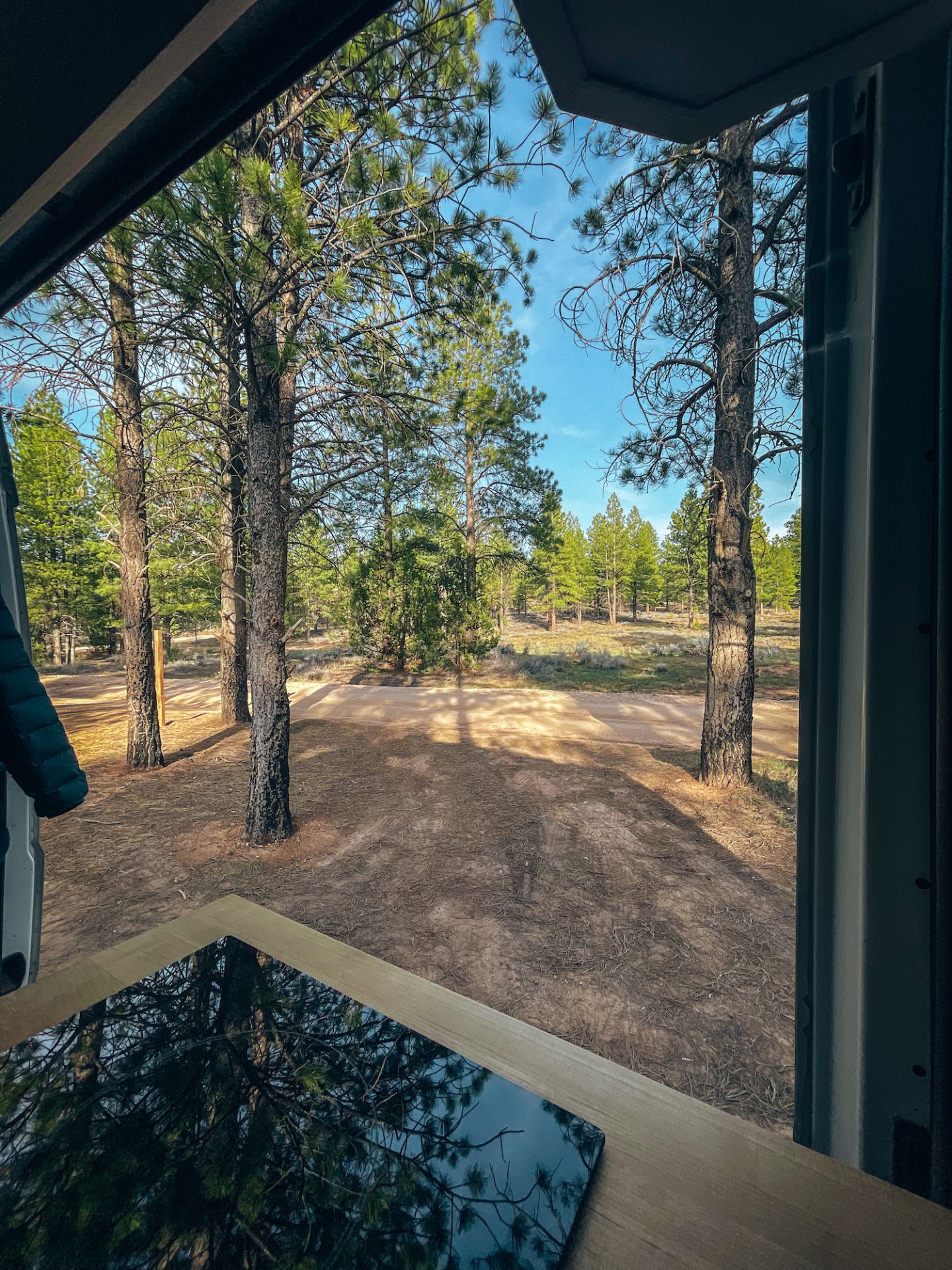
If you’re a van lifer, or someone who would prefer to spend time on free land outside the park, we have good news! There are a number of locations just outside the park that offer free dispersed camping making it easy to get in and out of the park. Make sure to take a look at our map above for exact locations.
THINGS TO DO IN BRYCE CANYON NATIONAL PARK
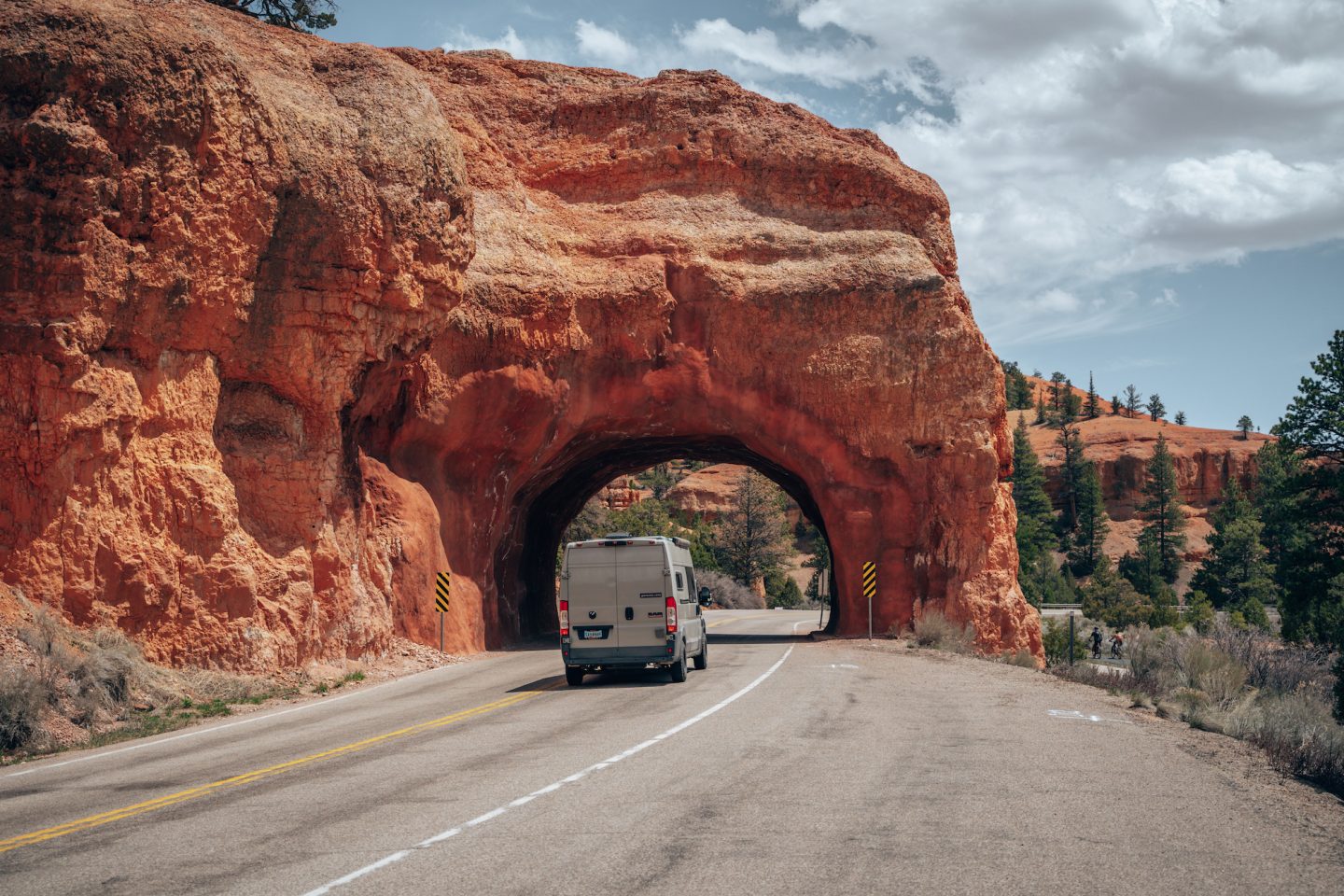
Bryce Canyon National Park offers an array of unforgettable experiences for nature enthusiasts and adventure seekers alike. From hiking along the rim to descending into the majestic hoodoos, Bryce Canyon presents a myriad of opportunities to immerse yourself in its otherworldly landscapes. Witness the mesmerizing hues of sunrise and sunset painting the towering rock formations. Explore the vast network of hiking trails that wind through the park’s captivating canyons. And be awe-inspired by the brilliance of the night sky in this designated International Dark Sky Park. Whether you’re an avid hiker, a photography enthusiast, or a stargazing aficionado, Bryce Canyon National Park promises an unforgettable journey where nature’s artistry takes center stage.
SCENIC DRIVE & OVERLOOKS
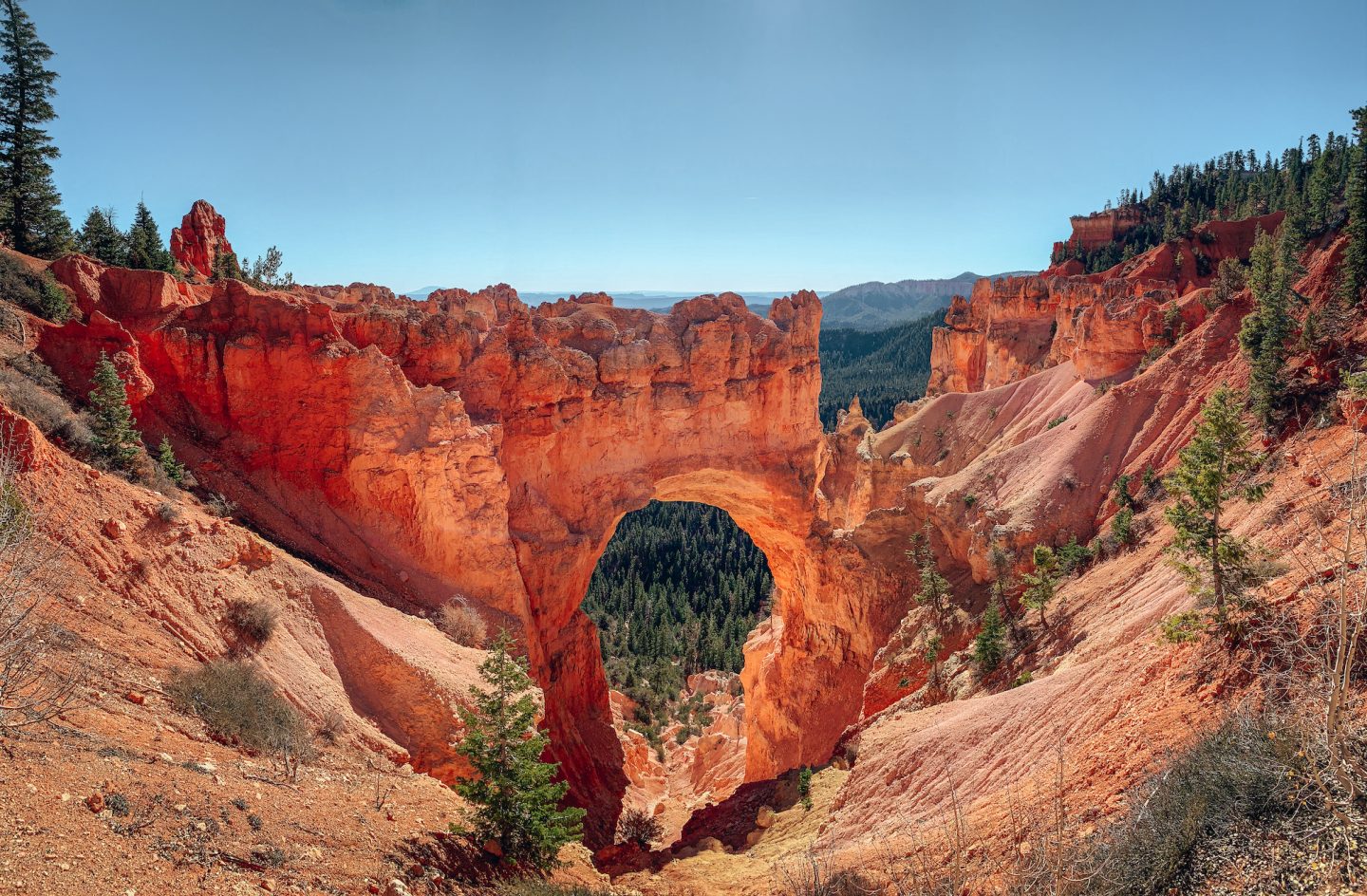
Begin your Bryce Canyon experience with a scenic drive along the park’s main road, which offers stunning views of the park’s unique rock formations and overlooks. There are quite a few overlooks along the drive, all with unique and stunning views. Here’s a few we’d highly recommend stopping at:
- Sunset Point
- Sunrise Point
- Inspiration Point
- Natural Bridge Overlook
- Agua Canyon Overlook
- Ponderosa Canyon Overlook
HIKES
Hiking and exploring Bryce Canyon National Park is one of the best ways to truly see and experience the park up close. There are a number of hiking trails within the park for all abilities and adventurers. Whether you’re looking for that perfect soft adventure, or something a little more strenuous and rewarding, there is something for everyone.
NAVAJO LOOP AND QUEEN’S GARDEN
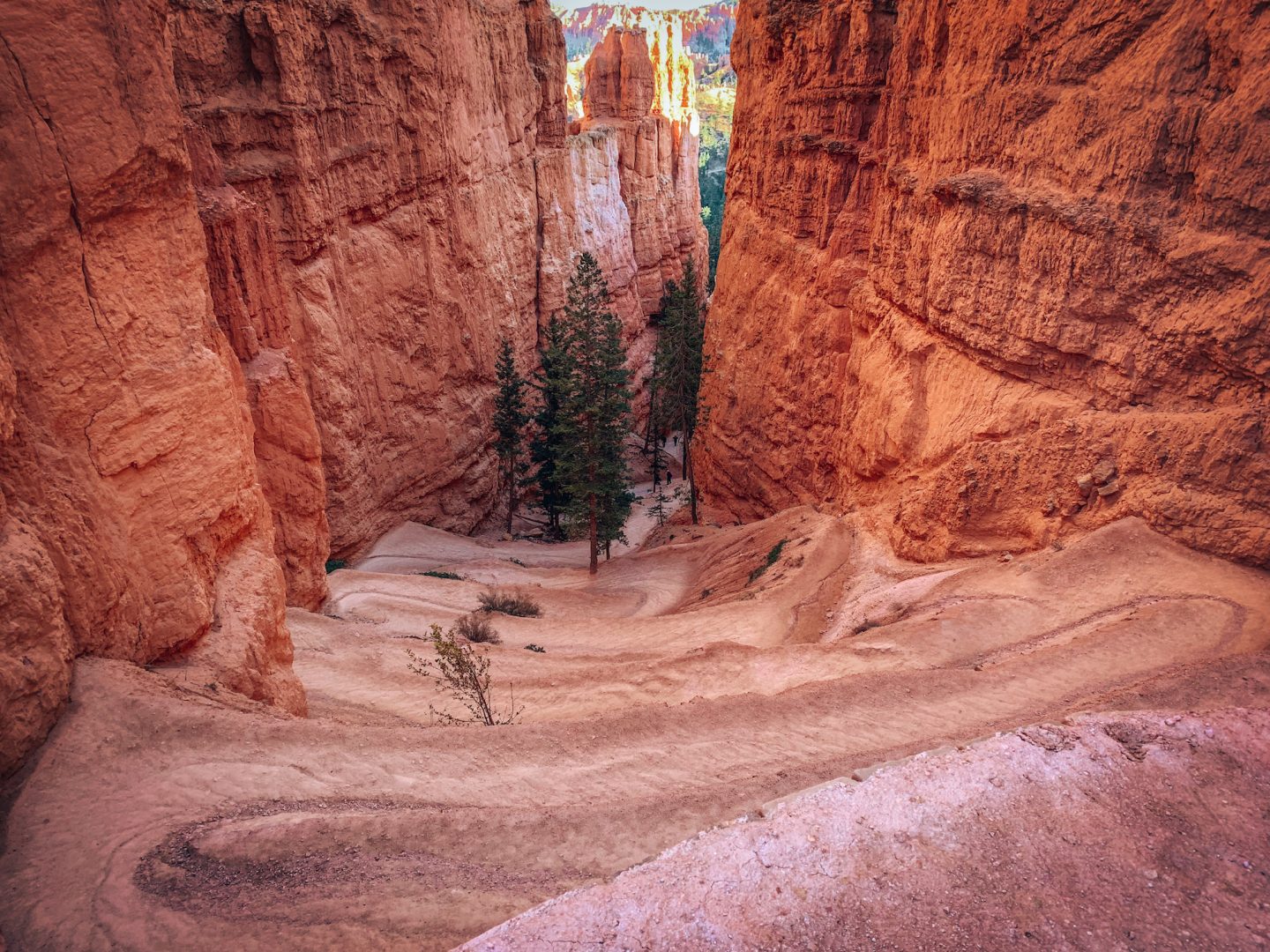
Easily one of the best ways to experience Bryce Canyon National Park. This classic combination trail provides an excellent introduction to Bryce Canyon’s iconic hoodoos. Descend into the canyon through Wall Street, a narrow slot canyon, and emerge at the bottom to witness the beauty of Queen’s Garden. The trail showcases a variety of hoodoos and offers breathtaking views along its 3.0mi loop. While we wouldn’t consider this a soft adventure, it’s worth the extra bit of effort to do!
- DIFFICULTY – Moderate
- LENGTH – 3.0mi / 4.8km loop
- PET FRIENDLY – No
- SOFT ADVENTURE APPROVED – No
PEEK-A-BOO LOOP
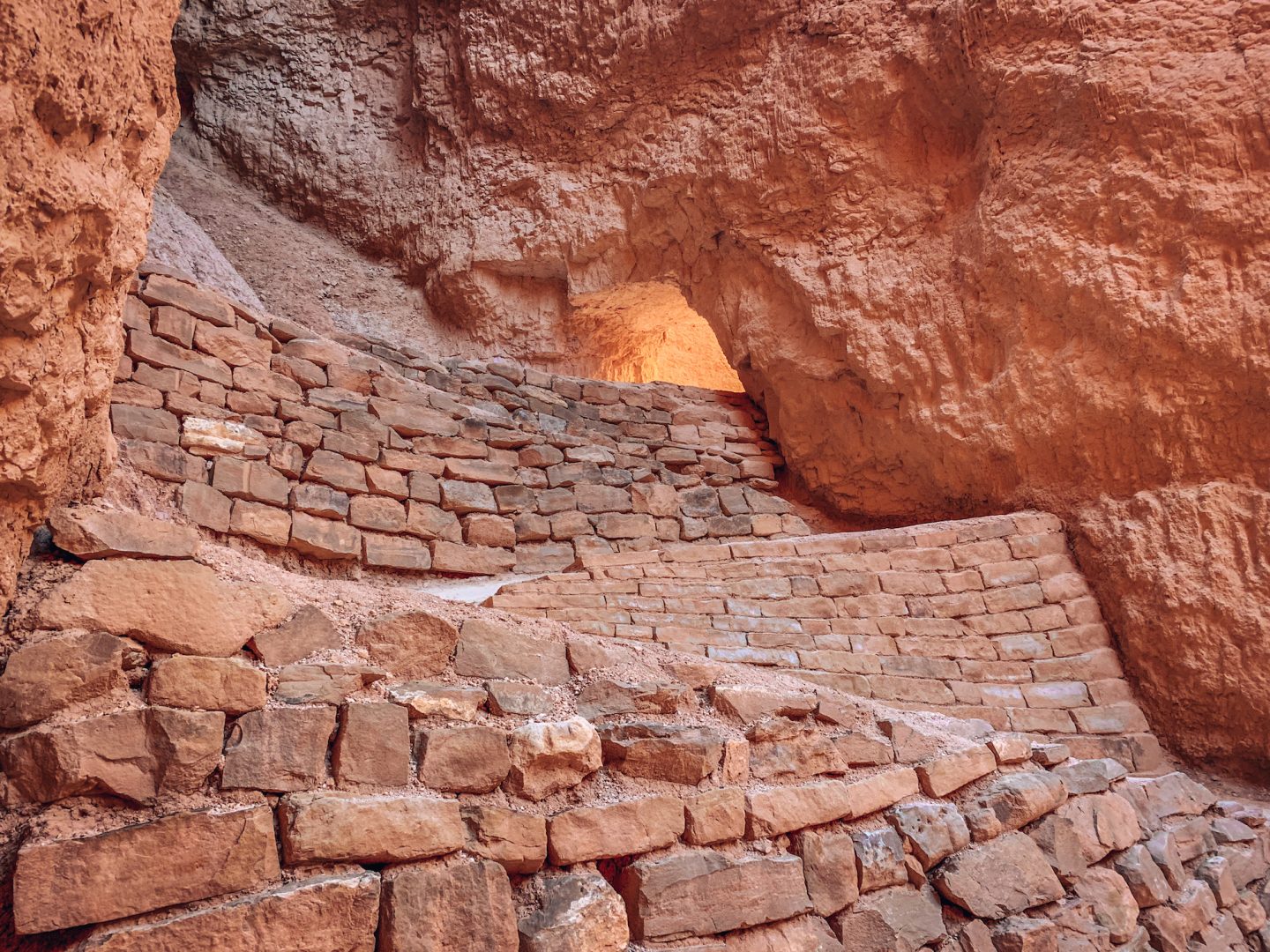
Embark on a 5.5-mile journey that delves into the heart of Bryce Canyon. This strenuous but rewarding hike allows you to traverse the amphitheater and offers spectacular views of famous hoodoos such as Thor’s Hammer and the Wall of Windows. Take note of the changing colors and shapes as you explore this captivating trail.
- DIFFICULTY – Moderate to hard
- LENGTH – 5.2mi / 8.4km loop
- PET FRIENDLY – No
- SOFT ADVENTURE APPROVED – No
FAIRYLAND LOOP
For a more secluded hiking experience, the Fairyland Loop is an excellent choice. This 8-mile trail takes you through a lesser-explored area of the park, where you’ll encounter striking rock formations, towering hoodoos, and panoramic vistas. Be prepared for some elevation changes and a longer hike, but the enchanting scenery makes it well worth the effort.
- DIFFICULTY – Moderate to hard
- LENGTH – 7.8mi / 12.5km loop
- PET FRIENDLY – No
- SOFT ADVENTURE APPROVED – No
THE RIM TRAIL
The Rim Trail stretches for approximately 11 miles along the rim of the Bryce Amphitheater, offering breathtaking panoramic views of the canyon. With multiple access points, you can customize your hike to fit your preferences and time constraints. Sort of a choose your own journey! The trail provides numerous overlooks and opportunities to marvel at the vastness and beauty of Bryce Canyon.
- DIFFICULTY – Easy to hard
- LENGTH – 0.0mi-11mi / 0.0km-17.7km
- PET FRIENDLY – No
- SOFT ADVENTURE APPROVED – Yes to No
SUNSET POINT TO SUNRISE POINT
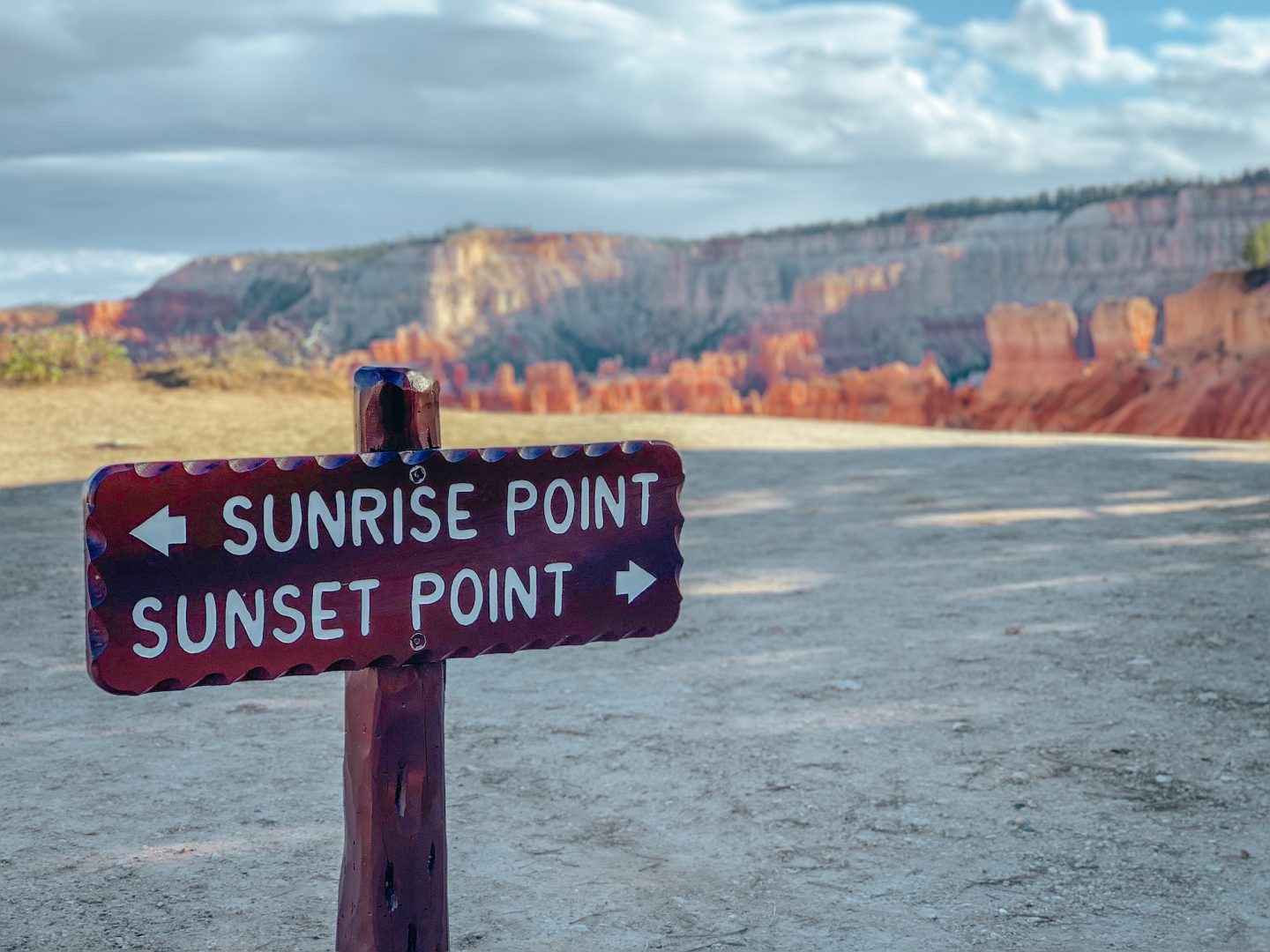
While we feel this trail name should be the other way around (sunrise to sunset), the trail and views are incredible none the less. This 1.1 mile hike takes you along the rim of the main amphitheater offering you views from each side. And if you’re looking for a good place to catch a sunrise or a sunset, look no further. This is easily one of the best soft adventures in the park.
- DIFFICULTY – Easy
- LENGTH – 1.1mi / 1.8km
- PET FRIENDLY – No
- SOFT ADVENTURE APPROVED – Yes
STARGAZING
Experience the awe-inspiring night skies of Bryce Canyon. The park is designated as an International Dark Sky Park, offering exceptional opportunities for stargazing. Attend one of the park’s astronomy programs or simply find a secluded spot to gaze at the countless stars above. You will not regret it.
HORSEBACK RIDING
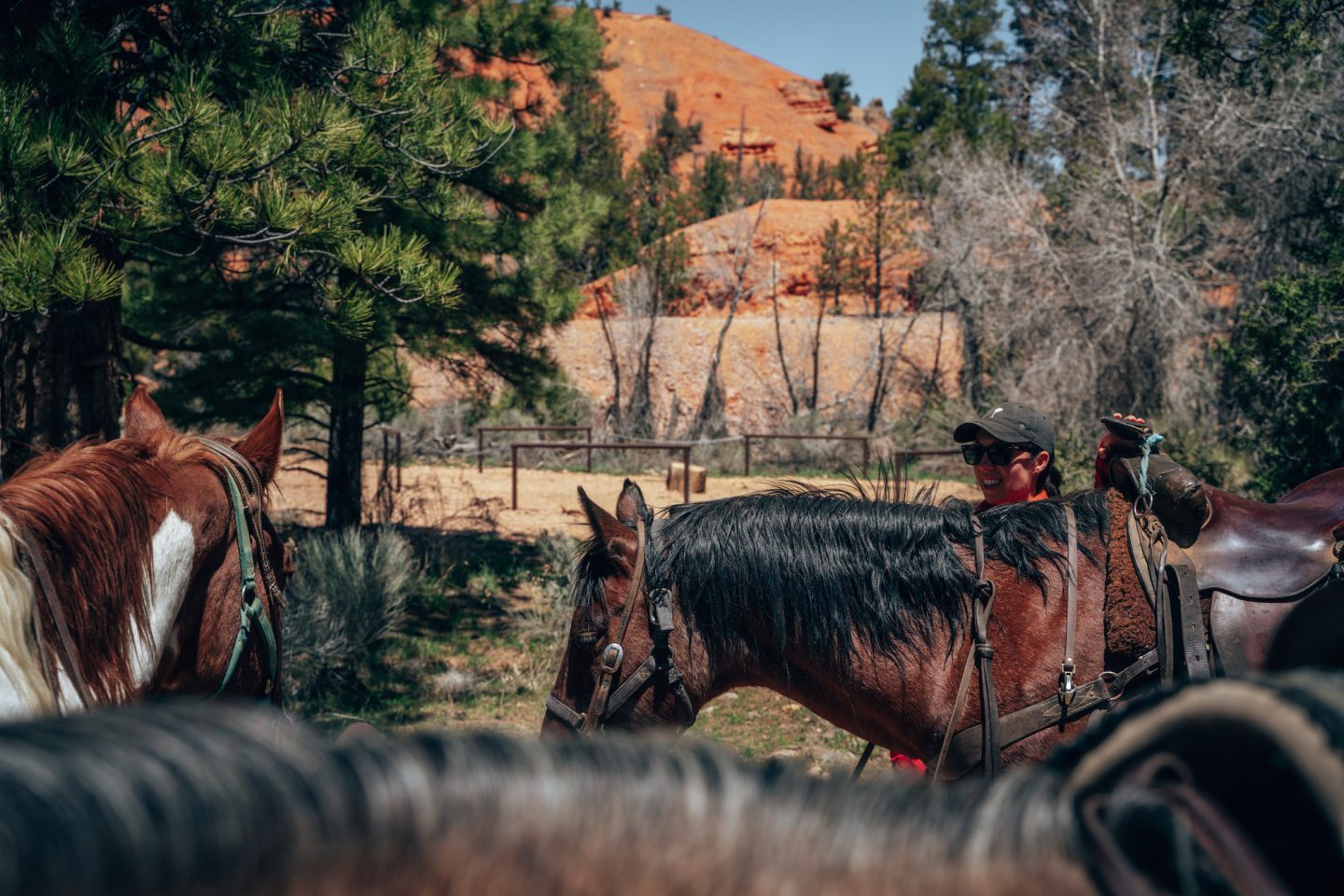
This is something we never expected to do ourselves, but during our most recent visit to the park, we had the opportunity to do a horseback riding tour! Our experience was with Red Canyon Trail Rides, and our tour guide Mike took us on a two hour ride through the Red Canyon. It was absolutely an unforgettable experience and one that we would highly recommend!
OTHER ACTIVITIES
There are a ton of things to do in this park. And if none of the above catches your interest, you’ll also find ranger led programs, snowshoeing and cross-country skiing in the winter, geology talks, wildlife spotting and more. To see all the different things you can do in this park, go HERE.
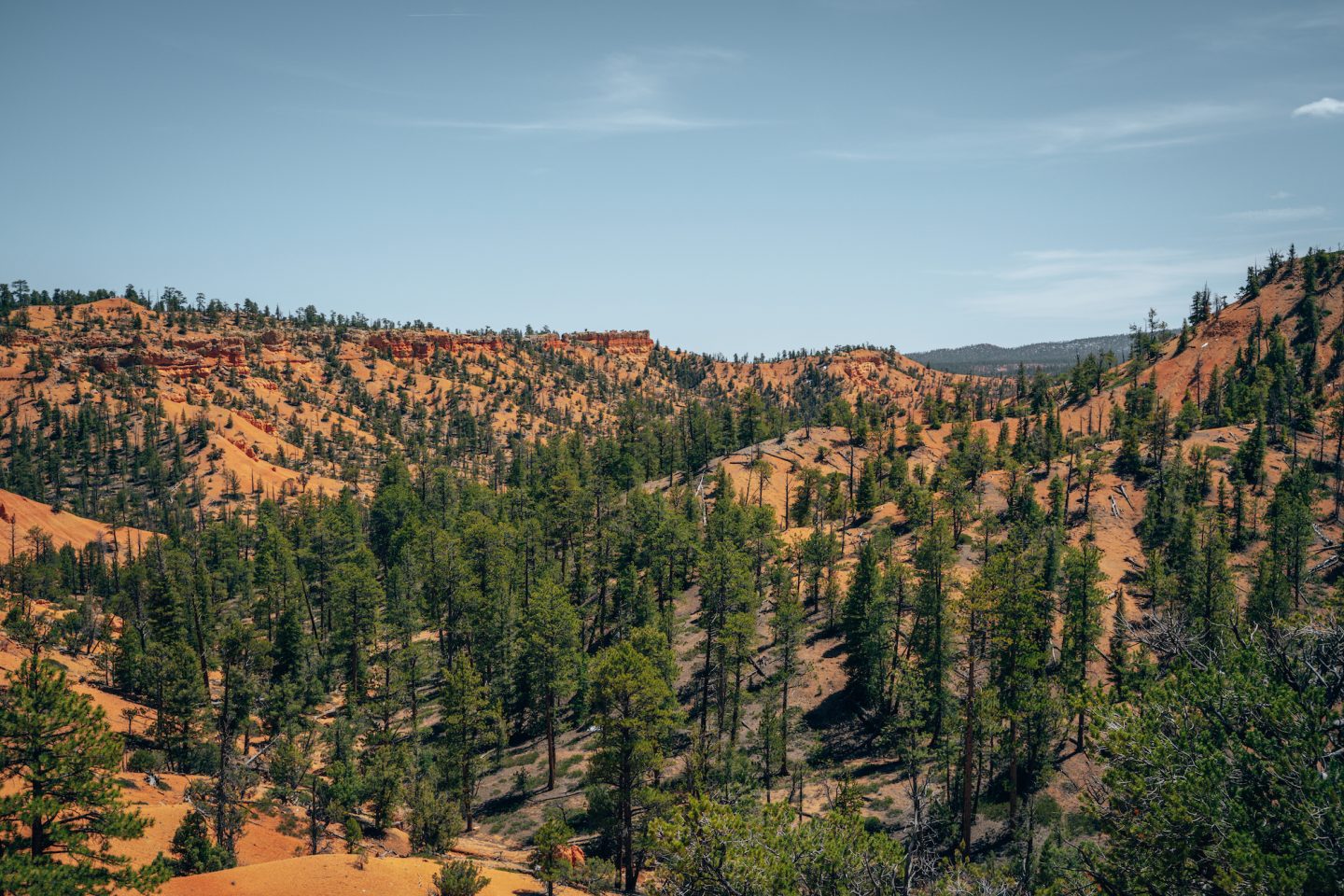
BEST TIME TO VISIT
The best time to visit Bryce Canyon National Park largely depends on personal preferences and desired activities. However, the park’s stunning beauty can be enjoyed throughout the year, each season offering its own unique experiences.
Spring brings milder temperatures, blooming wildflowers, and fewer crowds. It’s an excellent time for hiking and exploring the park’s trails. Summer is the busiest season at Bryce Canyon, with longer days and pleasant temperatures ranging from 70°F to 80°F (21°C to 27°C). It’s an ideal time for hiking, camping, and stargazing. However, be prepared for larger crowds, and consider starting your hikes early in the morning to avoid midday heat.
Fall offers cooler temperatures, vibrant fall foliage, and thinner crowds compared to summer. The park’s scenic beauty reaches its peak during this time, making it an excellent season for hiking, photography, and enjoying the changing colors of the hoodoos. Winter brings a serene and magical atmosphere to Bryce Canyon. While temperatures can drop below freezing, the park’s snow-covered landscape creates a breathtaking winter wonderland. It’s an ideal time for snowshoeing, cross-country skiing, and enjoying the tranquility of the park with fewer visitors.
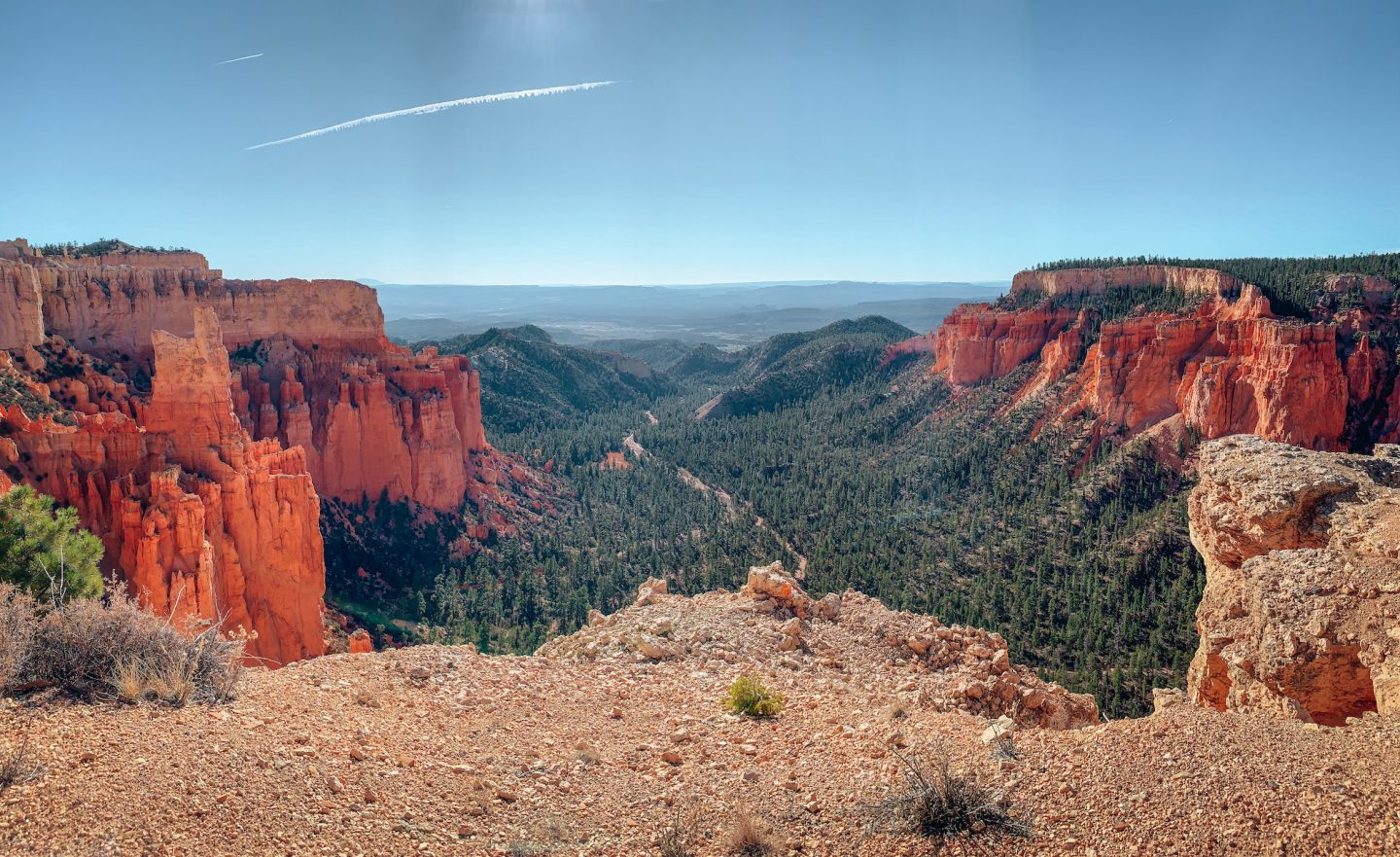
No matter the season, it’s important to be prepared for weather changes and check for any road or trail closures. Additionally, for stargazing enthusiasts, Bryce Canyon is a designated International Dark Sky Park. It offers exceptional opportunities to witness the brilliance of the night sky throughout the year. Considering factors like weather, crowd levels, and preferred activities, choosing the best time to visit Bryce Canyon National Park can vary. Ultimately, it’s about finding the season that aligns with your interests and offers the experiences you seek in this remarkable natural wonder.
We’ve visited in April and October, and it was still quite brisk with snow still on the ground both times. But we had minimal issues with crowds.
You can keep up with park updates HERE.
SEASONS
SPRING
- Avg Low temps: 24ºF / -4ºC
- Avg High temps: 53ºF / 12ºC
SUMMER
- Avg Low temps: 45ºF / 7ºC
- Avg High temps: 75ºF / 24ºC
FALL
- Avg Low temps: 27ºF / -3ºC
- Avg High temps: 57ºF / 14ºC
WINTER
- Avg Low temps: 12ºF / -11ºC
- Avg High temps: 36ºF / 2ºC
HOW MUCH TIME IS NEEDED
The amount of time needed to visit Bryce Canyon National Park depends on the level of exploration and activities you wish to do. While you can see the highlights of the park in a day, spending more time allows for a more immersive experience. Here are some general guidelines:
Day Trip: If you have limited time, a day trip to Bryce Canyon can still provide a memorable experience. You can drive along the scenic viewpoints, take short hikes along the rim trails, and witness the beauty of the hoodoos. Plan to spend at least 4-6 hours in the park to get a taste of its unique landscapes.
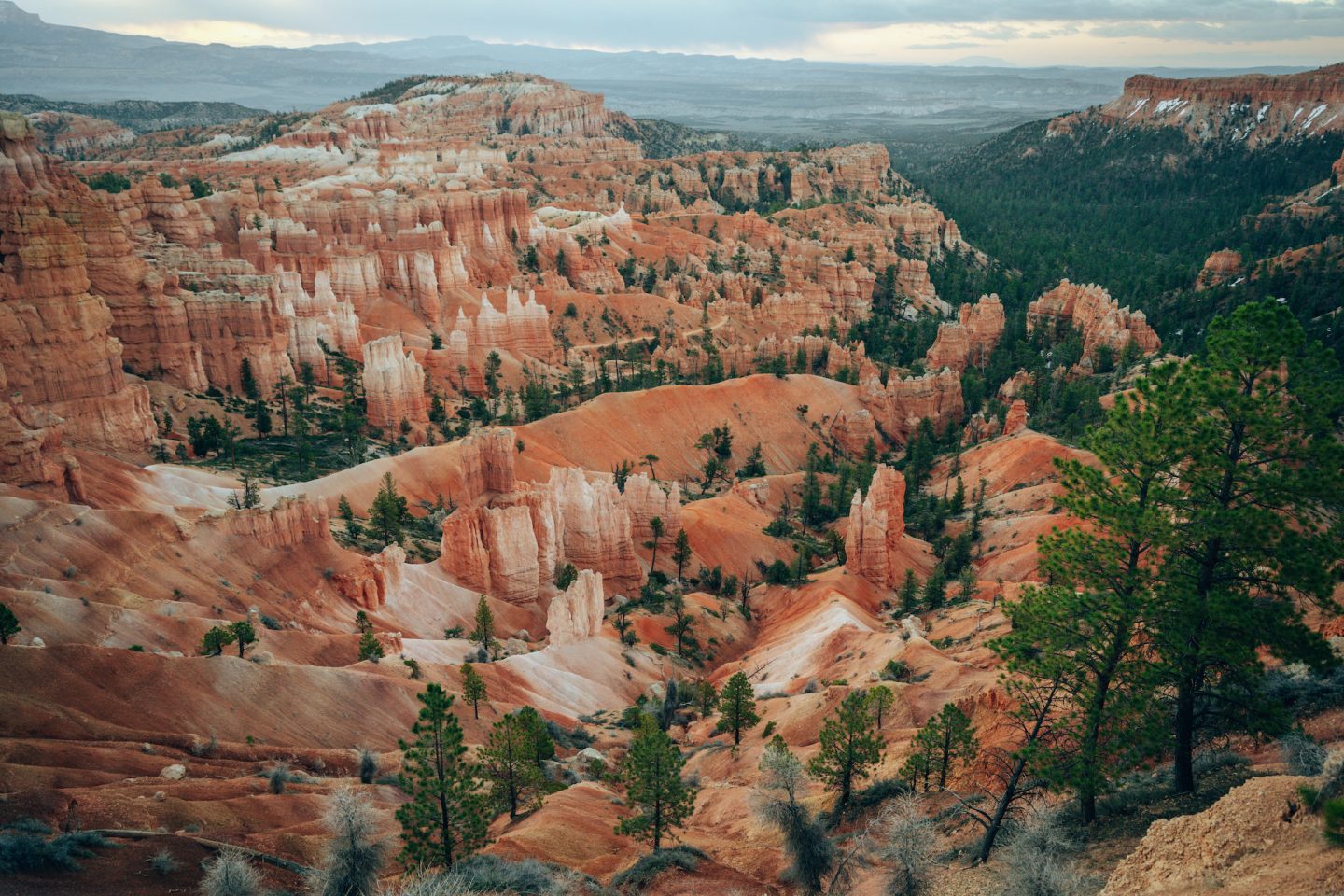
Overnight Visit: To fully appreciate the park’s natural wonders and do more activities, consider spending at least one night. This allows you to explore hiking trails, and experience sunrise or sunset views. With an overnight stay, you can enjoy the serene atmosphere of the park during less crowded times. This would also allow you to experience stargazing at the park which is truly an incredible experience!
Multiple Days: If you’re a hiking enthusiast or want to immerse yourself in the park’s beauty, allocating two or more days is recommended. This allows for more extensive hiking experiences, such as traversing the Fairyland Loop or Rim Trail, and allows time for relaxation, stargazing, and enjoying the park’s tranquility.
Ultimately, the time needed to visit Bryce Canyon National Park is subjective and dependent on individual preferences. However, dedicating at least a full day or more will provide a fulfilling experience and ample opportunities to explore the park’s remarkable geological formations and natural wonders.
OTHER THINGS TO CONSIDER
CELL PHONE SERVICE
Cell phone service inside the park is very spotty, subject to your carrier. We found that between Verizon and T-Mobile, we had limited service in most areas around the park.
We’d highly recommend downloading offline maps, trail info, and make sure to share your plans and itinerary with someone outside of the park in case of emergency.
And if you’re camping in or around the park, we found that Starlink does work well if you can find an open enough space to reduce the risk of any obstructions.
PET FRIENDLY?
Sadly, Bryce Canyon is not the most pet friendly park, this is largely due to the local wildlife and land. Pets are only allowed in the campgrounds, parking lots, paved roads and paved viewpoints areas, and the paved trail between sunrise and sunset point.
You can find more info on the NPS website HERE.
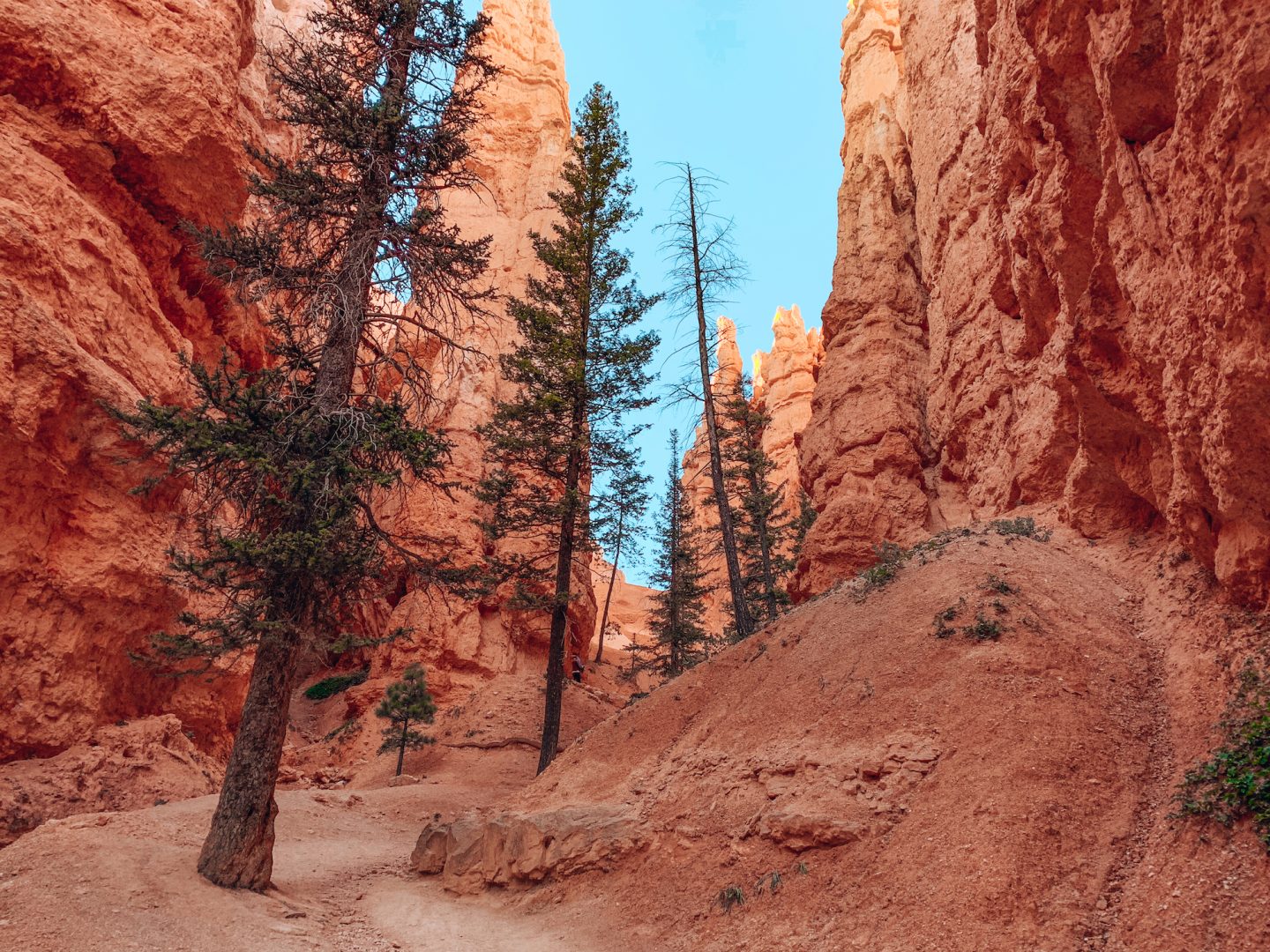
LEAVE NO TRACE & 10 HIKING ESSENTIALS
This park is full of unique landscapes and fragile environments. Both for plant life, and animals alike. So it is incredibly important to practice the 7 PRINCIPLES OF LEAVE NO TRACE, and follow the posted signage and guidelines of the park. If you aren’t familiar with Leave No Trace, here’s a breakdown:
- Plan ahead and prepare
- Travel and camp on durable surfaces
- Dispose of waste properly
- Leave what you find
- Minimize campfire impact
- Respect wildlife
- Be considerate of others
There are additional and more in-depth details of what each of these means on the LNT website. So make sure to take a look at that!
Similarly, because of how harsh the weather conditions can be, and because there is virtually no cell-phone service anywhere, it is important to hike with the 10 ESSENTIALS OF HIKING. If you aren’t familiar, here’s a breakdown:
- NAVIGATION – maps, guides, compass, GPS locator
- HEADLAMP – flashlight and extra batteries or charger
- SUN PROTECTION – body sunscreen, lip sunscreen, and clothing protection
- FIRST AID – including animal and bug repellents
- KNIFE – as well as knife repair kit
- FIRE – matches, lighter, tinder and striker
- SHELTER – tent, cover, or anything to protect and cover you
- FOOD – snacks and extra meal
- WATER – more than the minimum recommended amount
- CLOTHES – enough to handle night-time elements
Interested in knowing what gear we use for all our adventures? Check out our Rock Porch lockers which list all of the gear we use, and where to shop it!
ULTIMATE GUIDE TO BRYCE CANYON NATIONAL PARK IN UTAH
Let us know what you thought of this, if we missed anything, and if you plan on taking a trek to Bryce Canyon National Park at some point below in our comments!
And if you’re looking for some other southwest or National Park inspiration, check out some of our other articles:
- TOP 10 OUTDOORSY THINGS TO DO IN ARIZONA
- VISITING MONUMENT VALLEY IN AZ
- VISITING HORSESHOE BEND IN ARIZONA
- ULTIMATE GUIDE TO THE GRAND CANYON NATIONAL PARK IN ARIZONA
- BEST HIKES IN SEDONA ARIZONA
If you aren’t following us on Instagram, then check us out there and give us a follow! This will be the best place to follow our journey and adventures!
Thanks for stopping by!
Ryan & Katy